Bike Perfect Verdict
The Lake MX146 is easy to get on, precise to adjust – even when you’re wearing gloves – and will keep you warm and dry. The only thing you need to watch out for is the non-standard sizing.
Pros
- +
BOA M4 dial is useable with gloves
- +
Midsole design works to pedal if you can’t clip in
- +
Easy to get on and off
- +
Clever insole design keeps sole from conducting cold
Cons
- -
Recommends frequent DWR reapplication
- -
Wide design rubs against the crank
- -
Non-standard sizing
Why trust BikePerfect
There’s nothing wrong with spending your winters riding through virtual landscapes. On the other hand, with the right equipment, you might find real magic in the real winter landscapes. Trails you've covered in the past take on a whole new look under winter skies and there’s adventure to be had. You do need the right gear, though, and that might include a pair of the best winter MTB boots.
We’ve been out covering the terrain all winter and this year our footwear insulators of choice have been the MX146 winter boot from US company Lake Cycling. Its headquarters sits near the northern US border where lake effect snow is a way of life. The brand knows something about riding in the cold and now that we’ve spent some time with the MX146 we’re ready to share what works and what doesn’t. If you’ve had enough of cold, wet feet then keep reading to see if the Lake MX146 winter boot might be right for you.
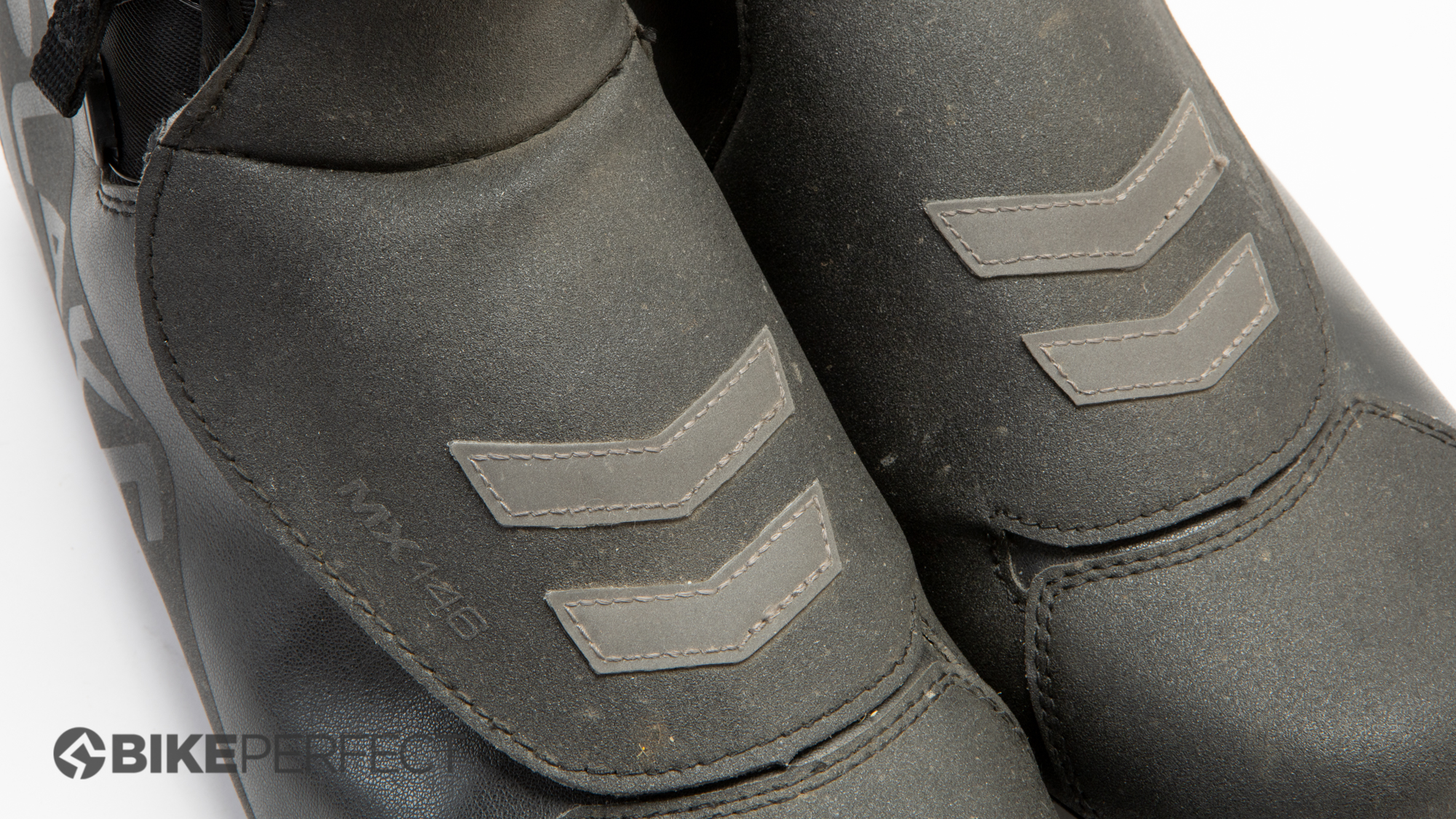
Design and aesthetics
With any winter boot meant for any degree of water resistance, the design has to hinge around the closure system. Keeping water out would be a lot easier if you didn’t have to get a foot in and out. The Lake MX146 is no different and Lake rises to the challenge with a mix consisting of a buckle, Velcro, a flap and a BOA dial to pull it all together.
Tasked with keeping the water out is a flap that uses the same materials as the rest of the upper. That means a Clarino Microfiber synthetic leather using both a DWR (durable water repellent) outer coating and a membrane internally. Despite the excellent water-resistance of the construction, nothing is totally waterproof, so every seam or closure is a potential point of water ingress. There is still a single seam at the ankle but for the most part, the design keeps water out by overlapping the opening. One side of the boot simply extends over the top of the opening and on the lower section there’s a Velcro attachment at the edges to keep things in place.
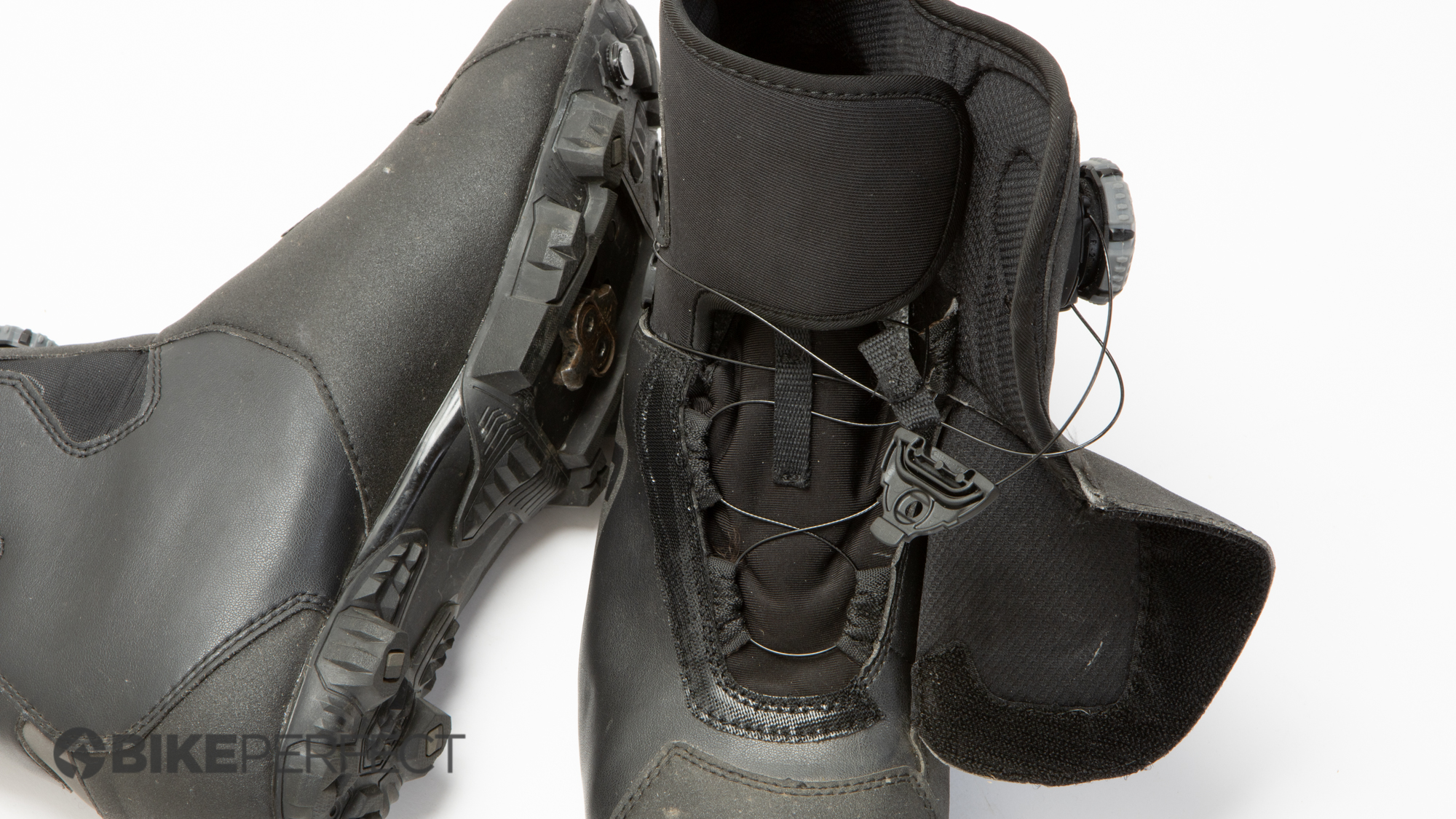
As the flap transitions from the top of the foot to the ankle, the Velcro ends and the buckle along with the BOA system take over. The cables for the BOA system start behind the Velcro but in the lower section they are tightening the inner part of the boot. In the upper section, the BOA tightens the outer layer of the ankle and there is no inner layer.
Although many people think of BOA dials as a single uniform design, there are a variety of different options for different types of shoes. In the case of the MX146, the chosen option from BOA is the M4 dial. This is a dial engineered for mid-cut boots and it excels in ice, dirt, and other harsh environments. Part of that design is that it sticks out farther from the boot and has more area to grip. This makes it effortless to adjust, even when wearing gloves.
Paired with the BOA system in the MX146 is a buckle and pull system meant to make getting in and out of the boot even easier. On the outside of the ankle is a buckle that connects through the BOA cable. Below that is a pull tab that also runs through the cable. The process to release the upper is to pop the BOA dial open, pull some extra cable out with the pull tab, then the final step is to open the buckle. With those steps completed, the entire upper is able to open making it easy to get your foot in or out.
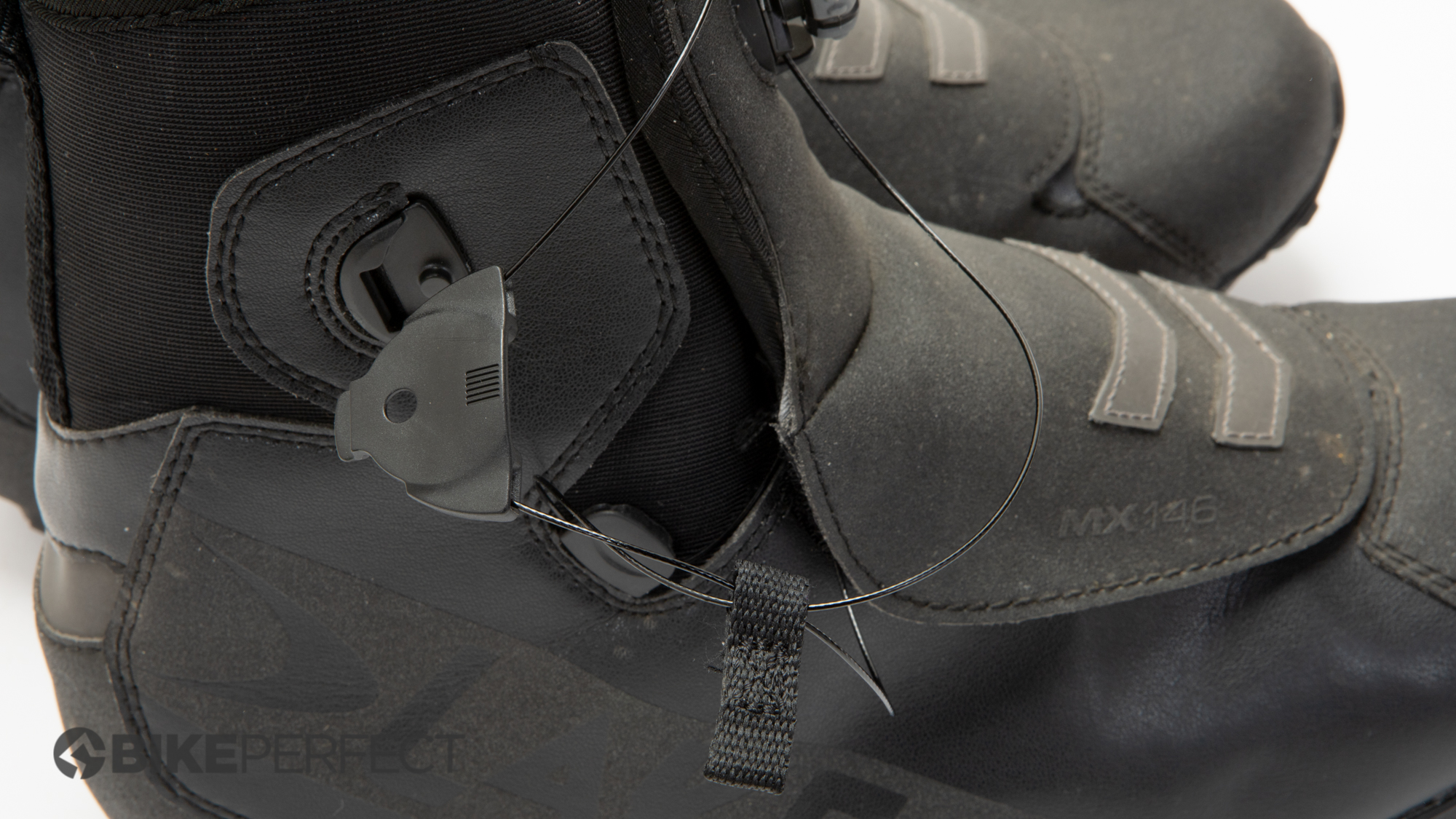
Performance
It takes some time to discuss the details of the closure system. It’s more complicated than with competing boots, but in use, it’s rather genius. The single BOA dial is able to precisely adjust the tension across the entire boot and the M4 dial is easier when you’ve got heavy gloves on. The flap keeps the outer surface waterproof and also easy to clean by keeping the outside surface smooth. Then the last part, the buckle system, means that the Lake MX146 doesn’t give you the same grief as the Bontrager JFW, which is a similar shoe to the Lake in some ways, but is a chore to get on or off.
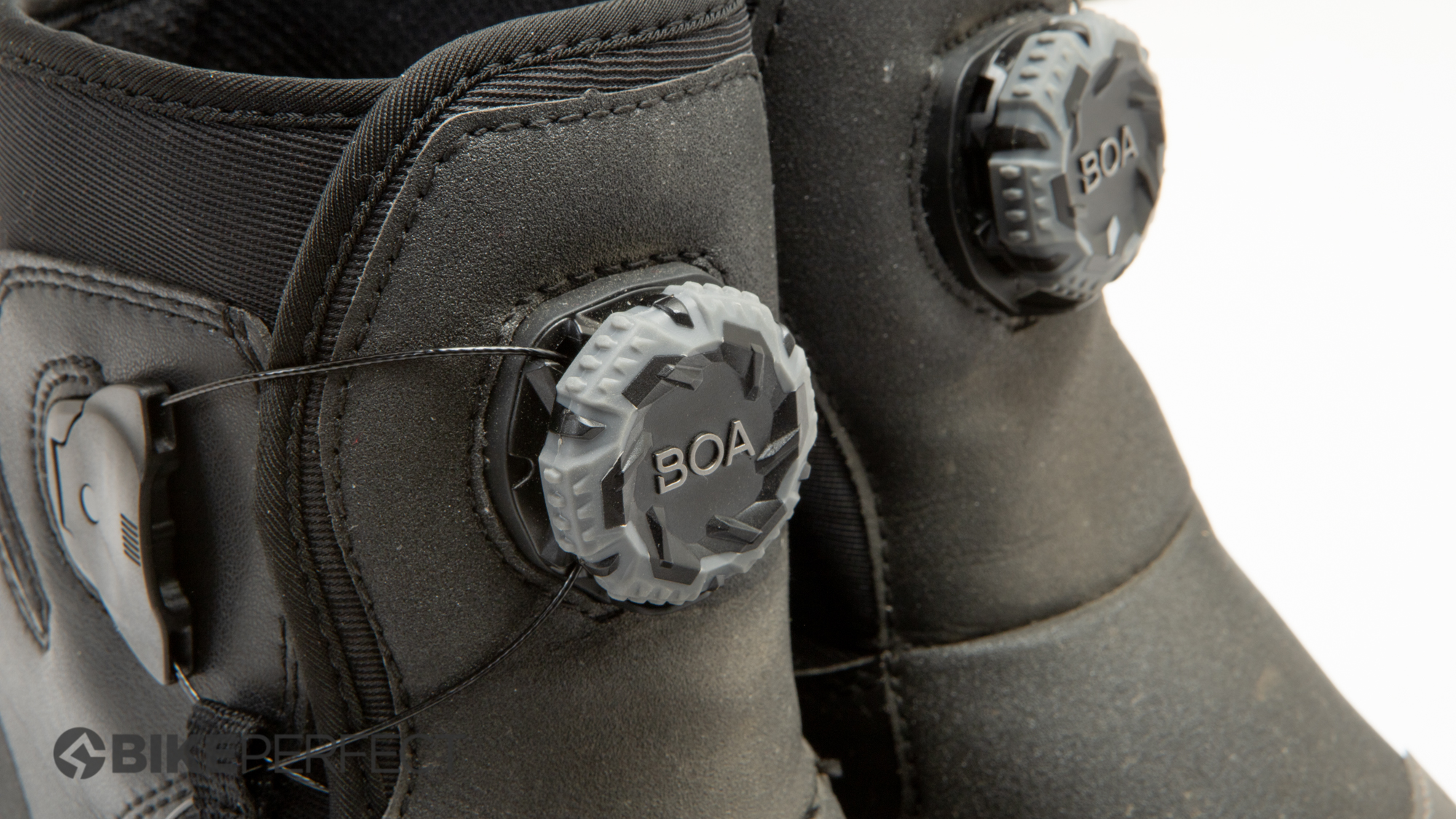
Despite that being a big part of the design, though, it’s not what dominates the performance discussion. When it comes to keeping your feet warm the most interesting feature is the insole. No matter how warm the upper section of a boot is, it’s often the sole that fails to properly insulate. Cold can conduct through the sole and through the cleat right into the bottom of your foot.
To solve this problem, Lake turns to the expertise of a company called Syksol. The Syksol Thermosol that Lake uses is a three-part system that works better than any other solution I’ve tried. At the top there's a wicking and insulating felt layer. Below that is a reflective aluminum barrier layer. These two layers aren’t anything unheard of or even unusual. They are very similar to the insoles that Fizik uses in its Artica X5 winter boots. The real innovation with the Thermosol is the underside.
Look at the bottom and you can see a waffled texture. It’s stiff enough foam that it doesn’t compress and the texture creates a series of air pockets under your foot. That air heats up and keeps the cold that comes in contact with the rubber outer from conducting into the bottom of your foot. More than any other feature, this resistance to cold weather conduction from the outsole is what makes for a comfortable ride.

Moving away from the inner performance, there is also a feature of the outsole worth mentioning. Stiffness and walking traction are almost not worth mentioning. This is an expensive boot and if the performance was lacking that would be a story. As it is there’s plenty of traction and if you’re spending long days in these boots, the sole, while not carbon, is plenty stiff enough to ward off hotspots. What’s more unique is the space between the forefoot and heel.
Many boot designs leave the midfoot section smooth. If you clip out to deal with a technical section it can be difficult to clip back in on an incline. Lake adds texture in this section so that when you stomp on the pedals you won’t slip off. If you need to turn the crank a few times before you can get your cleat lined up, you won’t have trouble. You also won’t mar the finish since the texture is rubber.
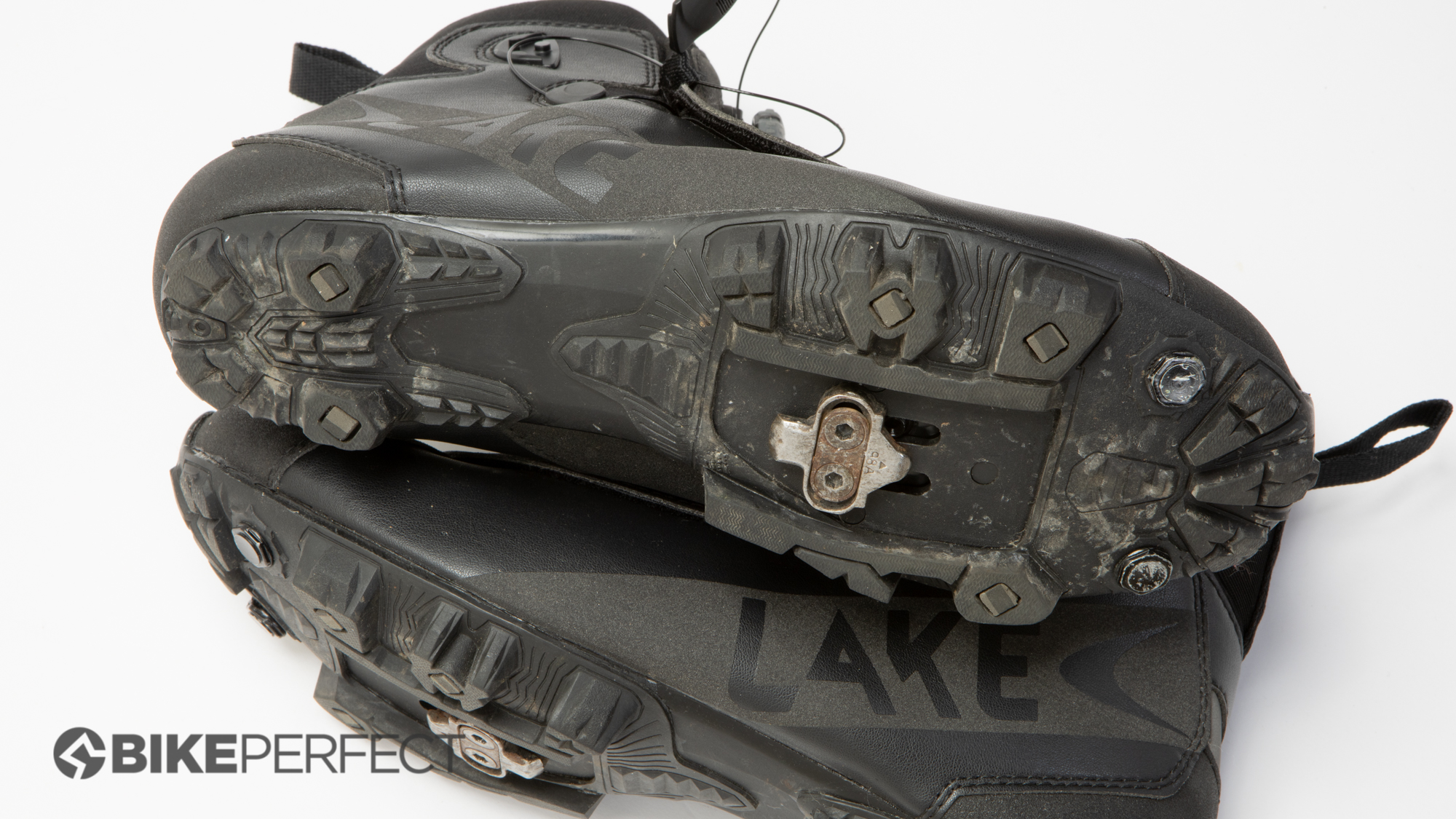
Verdict
In some ways, the Lake MX146 is an old-school winter boot design that could come from another sport. That’s reflected in the bulk and the need to re-apply DWR on a regular basis. The leather might be a high-tech synthetic but it looks and feels like the real thing and in some ways brings with it the good – and bad – that real leather would. On the other hand, that old-school approach brings with it serious cold weather credentials. Although I’ve only gotten as low as 30F / -1C I expect the temperature ratings of 25F / -4C to be accurate.
Married to that traditional boot-making design is an element of new school technology. Specifically, a three-part closure system with a BOA dial makes getting in and out much easier than other solutions. The insole is outright better than other solutions and the smart details of the outer midsole make dealing with technical trails easier.
The biggest challenge with the Lake MX146 has to be sizing. Lake sizing, in general, is larger than any other brand but the winter boots don’t offer half sizes and require even more upsizing. If you’re considering your first pair make sure you either buy in person or leave time for back-and-forth shipping.
Tech Specs: Lake MX146 Winter Cycling Boots
- Price: $259.99 / £191.99 / €230.99
- Color Options: Black / Black Reflective
- Weight: 590 grams (including cleat) per shoe in size 46
- Size availability: 36-50
Josh Ross was our US tech writer. He's most happy when talking about the finer details of how bicycle parts and components work, and enjoys putting his thoughts to words. He is a road cyclist at heart but can often be found taking the gravel road less traveled. Although he rarely races these days, he still enjoys a good Zwift session and race but will always choose the real world over pixels. Height: 5'9" Weight: 137 lb.


